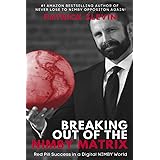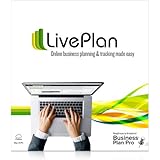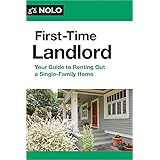The highly effective BRRRR strategy, detailed in the accompanying video, stands as a cornerstone for experienced real estate investors seeking to rapidly build wealth and scale their portfolios. This method, Buy, Rehab, Rent, Refinance, Repeat, is widely regarded as an indispensable framework for generating significant equity and deploying capital efficiently, allowing for continuous portfolio expansion rather than being limited by initial capital constraints. It is through the systematic application of these phases that investors are able to convert raw potential into tangible, recurring investment opportunities, distinguishing it from more linear investment approaches.
Understanding the BRRRR Method in Real Estate Investing
The BRRRR strategy represents a cyclical approach to real estate investing, meticulously designed to create and extract equity, thereby funding subsequent acquisitions. This methodology is particularly appealing for those aiming to transcend traditional property acquisition models that often necessitate substantial ongoing capital injections. Essentially, a property is identified and purchased, typically below market value due to its condition, and subsequently enhanced through strategic renovations. The property is then tenanted to generate income, followed by a refinancing process that extracts the newly created equity, which is then reinvested into the next project.
This systematic process is not merely about buying and selling; it is about engineered value creation and efficient capital recycling. Each phase is intrinsically linked to the next, with the successful execution of one step directly impacting the viability and profitability of the subsequent one. For seasoned investors, understanding these interdependencies is crucial for mitigating risks and maximizing returns, ensuring that the portfolio’s growth trajectory is both sustainable and aggressive. The underlying principle is to leverage debt intelligently to accelerate asset accumulation, rather than relying solely on appreciation or initial cash reserves.
1. The “Buy” Phase: Strategic Property Acquisition
The initial phase of the BRRRR strategy, “Buy,” necessitates a discerning eye for properties offering significant upside potential, often termed distressed assets. These are typically properties that are undervalued due to their physical condition, owner circumstances, or market inefficiencies, presenting an opportunity for forced appreciation. A thorough market analysis is imperative during this stage, encompassing local economic indicators, rental demand, comparable sales, and property tax trends, all of which inform a realistic purchase offer and subsequent rehab budget. It is not uncommon for investors to target off-market deals or properties acquired through auctions or foreclosures, where competition is often less intense and margins can be more favorable.
A critical component of this phase involves meticulous due diligence to accurately assess the property’s true value and the extent of necessary renovations. This assessment must account for not only the acquisition cost but also all anticipated expenses throughout the rehab period, including holding costs, permit fees, and unforeseen repairs. Securing the property at the right price is paramount, as it establishes the foundation for profitability in all subsequent phases. Any miscalculation here can erode potential returns, underscoring the importance of conservative estimates and comprehensive financial modeling.
2. Executing the “Rehab” Phase: Value Creation
Following a successful acquisition, the “Rehab” phase commences, focusing on strategic renovations that enhance the property’s value and appeal to prospective tenants. The objective here is not necessarily luxury upgrades, but rather targeted improvements that yield the highest return on investment (ROI) and align with local market rental expectations. Cosmetic updates, such as fresh paint, updated fixtures, and modern flooring, are frequently prioritized, alongside essential structural or mechanical repairs that address safety or functionality issues. The budget established during the “Buy” phase must be rigorously adhered to, with contingency funds allocated for unexpected complications.
Managing the renovation process effectively is critical for controlling costs and timelines. This often involves engaging reliable contractors, obtaining necessary permits, and overseeing the project to ensure quality workmanship and adherence to the specified scope. The goal is to transform the property into an attractive, move-in ready rental unit that commands a competitive rental rate and appeals to a broad tenant pool, thereby reducing vacancy periods. Value is deliberately added through these improvements, rather than waiting for market appreciation, which is a key differentiator of the BRRRR model.
3. Maximizing Returns with the “Rent” Phase
Once renovations are complete, the property transitions into the “Rent” phase, where the focus shifts to attracting and securing qualified tenants to generate consistent cash flow. A well-executed marketing strategy is essential, encompassing high-quality photography, compelling property descriptions, and widespread online listings. Thorough tenant screening processes are then employed, which typically include background checks, credit evaluations, employment verification, and previous landlord references, to ensure reliable and responsible occupancy. The objective is to minimize tenant turnover and potential property damage, preserving the investment’s value.
Setting the optimal rental rate is another crucial aspect, requiring a balance between maximizing income and remaining competitive within the local market. This rate is informed by the property’s updated features, location, and the prevailing rental rates for comparable properties. Effective property management, whether handled directly by the investor or outsourced to a professional firm, is indispensable for maintaining the asset, responding to tenant needs, and ensuring compliance with lease agreements. The consistent rental income generated during this phase is vital for covering operating expenses and demonstrating the property’s income-generating potential for the subsequent refinance.
4. The Critical “Refinance” Phase: Unlocking Equity for Growth
The “Refinance” phase is arguably the most pivotal component of the BRRRR strategy, as it unlocks the equity created during the “Rehab” and “Rent” phases, providing capital for future investments. After a period of stable tenancy (typically 6-12 months, depending on lender requirements), the property is appraised to reflect its increased value due to renovations and market conditions. As highlighted in the video, lenders commonly offer a cash-out refinance where 70-80% of the *new* appraised value can be borrowed against, effectively returning a significant portion, if not all, of the investor’s initial capital and rehab costs.
For instance, if a property’s value has increased by $100,000, approximately $70,000 to $80,000 of that newly created equity can be extracted. This process converts illiquid equity into usable cash, allowing investors to replenish their capital without selling the asset. It is important to note that the loan-to-value (LTV) ratios and terms of cash-out refinances are subject to market conditions, lender policies, and the investor’s creditworthiness. A strong debt service coverage ratio (DSCR) from the rental income is often a key factor for lenders, ensuring the property can adequately cover the new mortgage payment.
5. The “Repeat” Cycle: Scaling Your Real Estate Portfolio
The final “Repeat” phase underscores the cyclical nature and power of the BRRRR strategy, enabling investors to continuously expand their real estate portfolios. The capital extracted during the refinance phase is then deployed as a down payment or full purchase price for another distressed property, initiating the entire BRRRR cycle anew. This systematic recycling of capital is what allows for exponential growth, transforming a single successful investment into a scalable wealth-building machine. Through this process, investors can build a substantial portfolio of cash-flowing rental properties without needing to continuously inject new, external capital.
The efficiency of this repetition lies in the investor’s ability to refine their processes with each cycle, optimizing property selection, renovation management, and tenant placement. Over time, this disciplined approach can lead to a diversified portfolio generating significant passive income and long-term asset appreciation. The power of compounding, combined with strategic leverage, makes the “Repeat” phase the ultimate driver for achieving financial independence and substantial wealth accumulation through real estate investing, demonstrating why the BRRRR strategy is so highly valued among sophisticated investors.
Key Considerations for a Successful BRRRR Strategy
While the BRRRR strategy offers immense potential for wealth creation, its successful execution hinges on several critical considerations. Firstly, an intimate understanding of local real estate markets is non-negotiable; this includes grasping rental demand, property values, and renovation costs. Misjudging any of these elements can severely impact the profitability of a project, leading to overcapitalization or an inability to attract suitable tenants. Expert knowledge allows for more precise forecasting and risk mitigation, positioning the investor for sustained success.
Secondly, establishing strong relationships with reliable contractors and lenders is paramount. A network of trustworthy professionals can ensure renovations are completed on time and within budget, and that financing is secured on favorable terms. Moreover, investors should be adept at managing project timelines and budgets, as delays or cost overruns can quickly erode profit margins. The BRRRR strategy is a powerful engine for building real estate wealth, but it demands diligent execution and a keen analytical approach to navigating the complexities of property acquisition, renovation, and finance.









